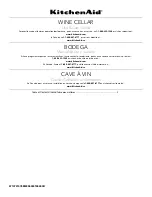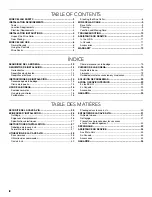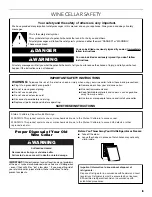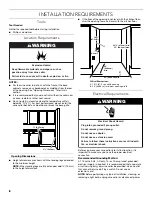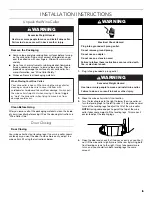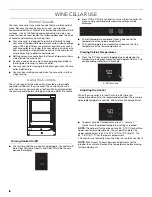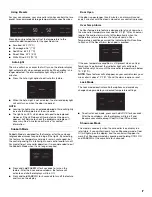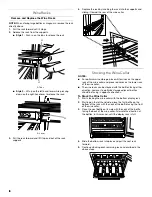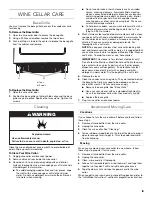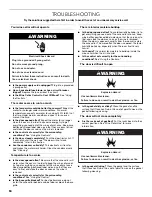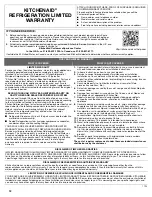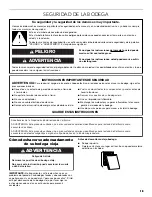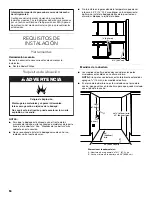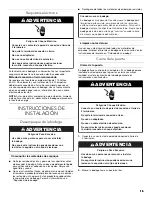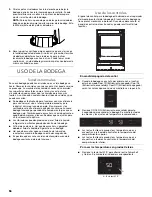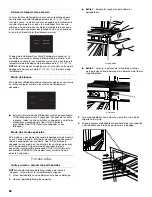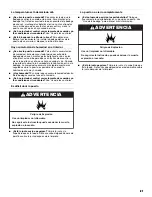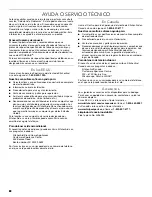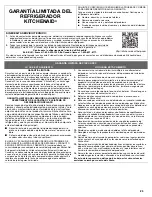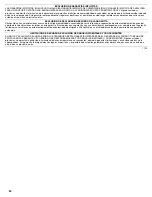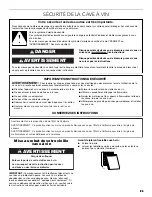
10
10
TROUBLESHOOTING
Try the solutions suggested here first in order to avoid the cost of an unnecessary service call.
Your wine cellar will not operate
■
Is the power supply cord unplugged? Plug into a grounded
3 prong outlet.
■
Has a household fuse blown, or has a circuit breaker
tripped? Replace the fuse or reset the circuit.
■
Is the Wine Cellar Control in Cool Off Mode? See “Using
the Controls.”
The motor seems to run too much
■
Is the temperature outside hotter than normal? Expect the
motor to run longer under warm conditions. At normal
temperatures, expect your motor to run about 40% to 80% of
the time. Under warmer conditions, expect it to run even
more of the time.
■
Is the door opened often? Expect the motor to run longer
when this occurs. In order to conserve energy, try to get
everything you need out of the wine cellar at once. Keep wine
bottles positioned label side up so that they are easy to find,
and close the door as soon as the wine is removed.
■
Is the control set correctly for the surrounding
conditions? See “Using the Controls.”
■
Is the door closed completely? Push the door firmly shut. If
it will not shut all the way, see “The door will not close
completely” later in this section.
■
Are the condenser coils dirty? This obstructs air transfer
and makes the motor work harder. Clean the condenser coils.
See “Cleaning.”
Temperature is too warm
■
Is the door opened often? Be aware that the wine cellar will
warm when this occurs. In order to keep the wine cellar cool,
try to get everything you need out of the wine cellar at once.
Keep wine bottles positioned label side up so that they are
easy to find, and close the door as soon as the wine is
removed.
■
Is the control set correctly for the surrounding
conditions? See “Using the Control.”
■
Is the base grille blocked? For best performance, do not
install the wine cellar behind a cabinet door or block the base
grille.
There is interior moisture buildup
■
Is the door opened often? To avoid humidity buildup, try to
get everything you need out of the wine cellar at once, keep
wine bottles positioned label side up so that they are easy to
find, and close the door as soon as the wine is removed.
When the door is opened, humidity from the room air enters
the wine cellar. The more often the door is opened, the faster
humidity builds up, especially when the room itself is very
humid.
■
Is it humid? It is normal for moisture to build up inside the
wine cellar when the air is humid.
■
Is the control set correctly for the surrounding
conditions? See “Using the Controls.”
The door is difficult to open
■
Is the gasket dirty or sticky? Clean the gasket and the
surface that it touches. Rub a thin coat of paraffin wax on the
gasket following cleaning.
The door will not close completely
■
Are the racks out of position? Put the racks back into their
correct positions. See “Wine Cellar Use” for more
information.
■
Is the gasket sticking? Clean the gasket and the surface
that it touches. Rub a thin coat of paraffin wax on the gasket
following cleaning.
Electrical Shock Hazard
Plug into a grounded 3 prong outlet.
Do not remove ground prong.
Do not use an adapter.
Do not use an extension cord.
Failure to follow these instructions can result in death,
fire, or electrical shock.
WARNING
WARNING
Explosion Hazard
Use nonflammable cleaner.
Failure to do so can result in death, explosion, or fire.
WARNING
Explosion Hazard
Use nonflammable cleaner.
Failure to do so can result in death, explosion, or fire.

